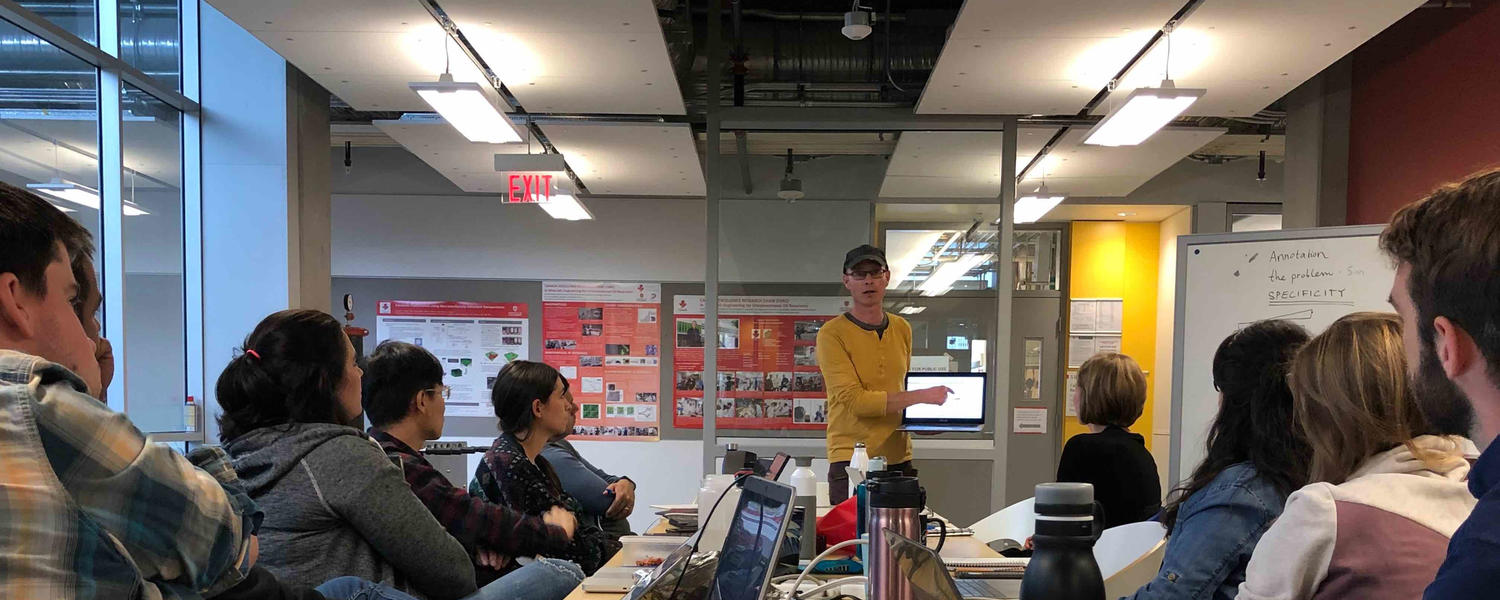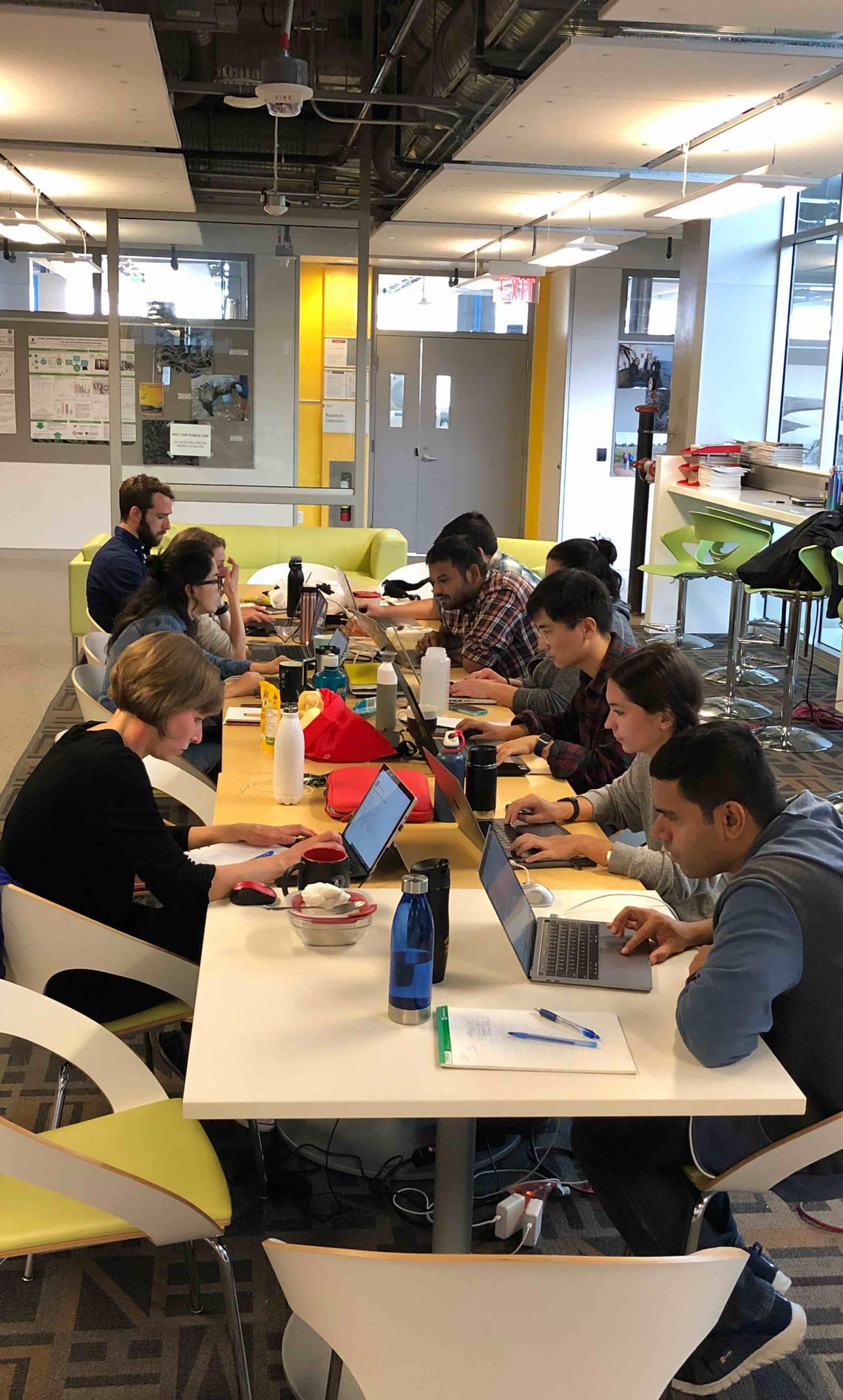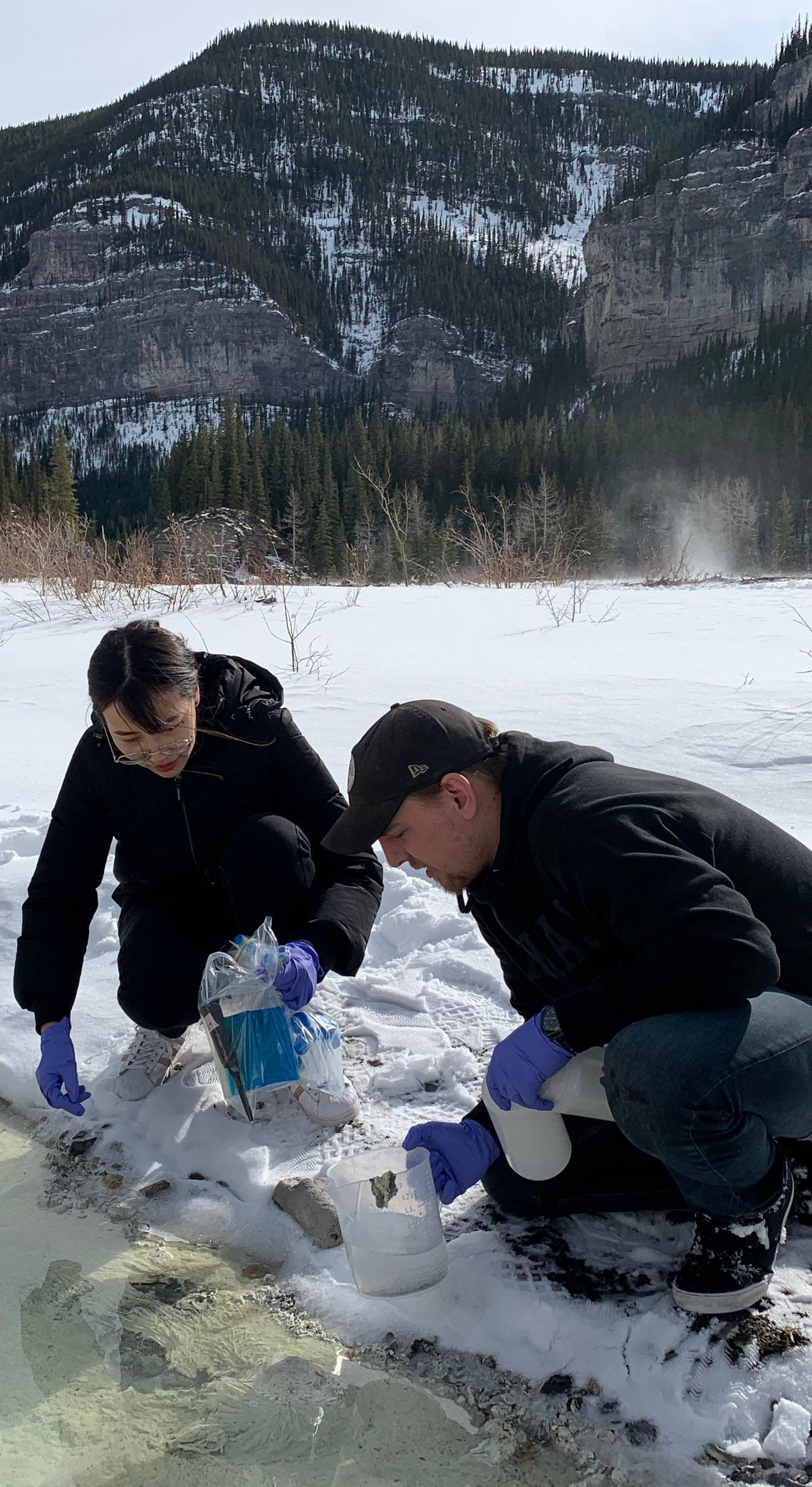
Our Mission
We contribute original research, tools and ideas to the progress of science for the benefit of our society, while training students, staff and post docs for successful careers.
Guiding Principles and Values
- Accuracy. We record and communicate data as accurately as possible and share records of all data processing steps.
- Curiosity. We ask questions freely and without reservations, even if they appear stupid or at odds with current paradigms.
- Diversity. We value diversity because it enriches our culture and helps us realize our ambitions.
- Equity. We provide each of us with the individualized resources and support they need to realize their goals.
- Inclusiveness. We ensure each of us has equal opportunity for participation, such as teaching, presenting and peer-reviewing.
- Integrity. We communicate truthfully and our actions line up with what we communicate.
- Respect. We treat each other kindly and with understanding, no one is better than another for any reason.
- Safety. We prioritize a safe working environment that promotes physical and mental health. We advocate the safety of our environment to others.
- Transparency of data and ideas. We share our progress as openly as possible, both in formal and informal settings, within and outside the group.
- Trust. We build and maintain relationships of mutual trust that enable effective collaboration to take place.
Acknowledgement of Territorial Lands
The MMG labs at the University of Calgary are situated on land adjacent to where the Bow River meets the Elbow River; this site has long been called Moh’kinstsis by the Blackfoot, also Wîchîspa by the Nakoda, Guts’ists’i by Tsuut’ina, and it is the birthplace of the city of Calgary.
In the spirit of reconciliation, reciprocity, honour, and respect, we acknowledge that we are situated on the traditional territories of the people of the Treaty 7 region in Southern Alberta, which includes the Blackfoot Confederacy (comprising the Siksika, Piikani, and Kainai First Nations), the Tsuut’ina First Nation, and the Stoney Nakoda (including the Chiniki, Bearspaw, and Goodstoney First Nations). The Métis people of Alberta Districts 5 & 6 also call this land their home.
MMG researchers appreciate the opportunities we have to work together with Indigenous communities in Canada. Our work with the Nunatsiavut Government as part of their Imappivut marine plan is a collaboration with the Inuit of Nunatsiavut and focuses on ocean samples from Nunatsiavut waters that we collect together with local partners.
Our projects are guided by the United Nations Declaration on the Rights of Indigenous Peoples (UNDRIP) and the Calls to Action of the Truth and Reconciliation Commission (TRC). We strive to carry out research with respect, reciprocity, responsibility, relevance, and relationality that includes Indigenous peoples as partners, fellow researchers, Knowledge Keepers, and Rightsholders, in keeping with the First Nations Principles of OCAP® and the National Inuit Strategy on Research. We want to honor Indigenous knowledge and braid together different ways of knowing in a meaningful way, to achieve a just and brighter future.



Papers, Presentations and Patent Applications
- We strive to publish all our progress in open access journals or using a journal’s open access option. If, in exceptional cases, we publish in a paywalled journal, we make our accepted manuscript available via an open access repository or a preprint server.
- We welcome discoveries with potential commercial value, and in such cases we file a patent application if possible, before we publish the finding in a journal.
- As authors and co-authors, inventors and co-inventors, we take ownership of the work and provide critical and honest input, also and especially if we disagree with more senior team members. We make sure we understand everything and, if not, ask questions until we do.
- We offer authorship to people who contributed creatively and substantially as co-authors (or co-inventors for patents) and highlight support from others in the Acknowledgement section. We treat co-authorship seriously and carefully. We realize that decisions on co-authorship cannot be resolved with a one-size-fits-all formula. The responsible author(s), presenter(s) or lead inventor(s) has the final word on co-authorship based on contributions, our core principles and values as well as input from all involved.
- We offer all co-authors and acknowledged individuals the chance to review the final or near-final version of the manuscript, presentation or patent application before it gets submitted. Five business days is a minimum amount of time for review of papers and patents. Two business days is sufficient for presentations.
- We initiate an open conversation about authorship and the order of authors in the early stages of a project and continue this conversation until final authorship is determined upon submission of a manuscript or patent application.
- For presentations, we attribute creative and substantial contributions on the actual slides, together with the actual data. If possible, we include a photograph. We ask the contributor if they are ok with the photograph.
Communication
- When we organize a meeting, we invite all who are interested if possible, for example by posting the meeting on Slack. We do not display favoritism by selecting only a few.
- In meetings we provide everybody with the opportunity to express their opinions and ideas. We acknowledge and respect each others’ opinions.
- Students and postdocs share their research once every six weeks during our weekly Friday group meetings. Staff and Faculty present their progress once every six months. If they have no research updates to share, they present an interesting development in our field instead, for example a recent journal paper. This is in accordance with our value of transparency and to develop our skills in presentation and communication. This comes with the understanding that there are occasionally circumstances where other things may have more priority.
- We participate in the lab's informal activities, such as lunch and Friday drinks, at least once a week.
- We check in with our colleagues’ occasionally and informally.
- When we share new information with each other, we assume that information is confidential by default. We ask consent before we share the new information with others. To make information flow as freely as possible, when we share information, we indicate its sensitivity.
- We keep emails positive in tone and to the point.
- Mindful of possible misunderstandings, we avoid email to resolve complex issues.
- In emails, we double check to include all people relevant to the matter as recipients or in cc. We avoid bcc as much as possible.
- When a communication is relevant to all, we use Slack.
- We do our best to respond to emails within two days. At the same time, we realize that we sometimes have different priorities and that emails also get buried or overlooked. In such cases, we send kind reminders.
- We make an effort to engage with new team members and integrate them into our team.
Laboratory, Computational and Office Resources
- We follow all the rules and make our contributions to the common good, keeping equipment in a good state, the working areas clean, and dispose of waste promptly, maintaining safety as a priority.
- When we start as new team members, we make sure to follow all the onboarding procedures, including taking safety courses. When we leave, we follow all the off-boarding procedures, such as cleaning up our space and leaving our samples and data well organized.
- We help and teach each other.
- We avoid hoarding stuff and do not “borrow” stuff without notice.
- We are mindful of restocking and ordering consumables (chemical and otherwise) when supplies get low. For example, we do not use the last of a consumable and assume there is more somewhere else.
- We communicate openly on our plans, to avoid congestion around equipment, areas or servers.
- We are mindful of shared disk space as a finite resource and keep our long term data footprint as small as possible.
- We do not share our personal access codes with others.
- We maintain a lab journal (both for computer and lab work). Our journals can be electronic or paper. They remain property of the lab and will be archived after we leave.
- We organize stored samples and electronic data in a logical way, so that others may understand and use it after we leave. We label samples clearly (including name and date) and use meaningful filenames and folder names. We keep files describing stored samples and data and share these online or on our server, as a guide for team members.
- We make sure that we are properly trained to use an equipment before we start using it.
- We are mindful of our colleagues and take care to not disturb them in office spaces with chatter, music or strong scents.
- When we do not feel well, we stay at home to keep our colleagues safe and avoid exposing them to a potential infectious disease or agent.
- When we choose to disregard the rules, we will have two reminders to rectify the issue(s). If not done, we will be banned from laboratory for up to two weeks and will possibly need to redo lab safety training.
Recruitment
- We advertise openings for students and postdocs via social media, at conferences and/or on job websites.
- We create a pool of possible candidates, we do not settle for a single candidate.
- We evaluate candidates irrespective of gender, race, disabilities, age, nationality etc.
- We take training to recognize unconscious bias and set out a procedure for fair selection as a team.
- We interview candidates as a team and collect everybody's input. We recognize that job interviews are a two-way process and provide opportunities for candidates to interact with team members and make a well-rounded assessment of our team.
- We make sure to let the group know in advance when a new person has been hired or a lab member is leaving.
Commercialization
- We welcome commercialization of our research findings. If a team member contributes creatively and substantially to a finding that eventually gets commercialized, we try to have them take part in the benefits. This may happen, for example, by co-authoring a patent (see above) and by benefiting from licensing returns. If no patent was filed, EBG members in a position of power with the commercial entity will try to have their contributing colleagues take part in the benefits, for example by providing the option to buy shares retroactively via an employee shares program, once established. In that case, the EBG members in a position of power with the commercial entity have the final word on what constitutes a creative and substantial contribution. We acknowledge that whether these type of pathways toward benefits can be used may not be under full control of EBG colleagues.
Mentorship
The Principal Investigators (PIs, professors) mentor undergraduate, graduate students and postdoctoral scholars. As mentors they commit to...
- ... provide honest, supportive and timely feedback on progress, plans and manuscripts. For example, trainees can expect manuscripts to be turned around by their mentors within five business days.
- ... defend the interests of their trainees and look out for them.
- ... provide student/postdoc-focused mentorship that prioritizes the careers and interests of the trainees.
- .... set expectations proactively. Trainees are expected to do the same.
- ... treat all trainees equally and do not favor some over others in any way.
- ... provide safe learning spaces free of judgment and harassment.
- ... to always be present when undergraduates are active in the lab, to guarantee their safety.
The PIs may delegate mentorship roles to postdocs and graduate students. For example, a postdoc may provide mentorship to a graduate student. A graduate student may provide mentorship to an undergraduate student. The PIs make sure to train newly-minted mentors in mentorship and provide oversight so that the same high standards of mentorship are maintained.
Conflicts and negotiation
- We realize that conflicts amongst our team members are sometimes needed to move forward - we embrace these opportunities as part of our culture and do not avoid them.
- As we ara a diverse team, we may sometimes have different, conflicting opinions. We accept each others opinion without judgment.
- Conflicts may also be conflicts of interest. In that case, as conflicted parties, we take initiative to resolve our conflict respectfully amongst ourselves as soon as possible. We seek mediation when needed. If we feel escalation - a supervisor or manager acting as the mediator - is needed, we inform the other party before we escalate. For example, we avoid adding a supervisor in cc on an email to put pressure on the other party.
- We realize that conflicts of interest with others are a normal part of our lives. We negotiate respectfully to advocate for our own interests and find common ground.
- When, as trainees or staff members, we get into a conflict with our supervisor or manager and mediation is needed, we make use of mediation options provided by the University of Calgary. These are within Human Resources for staff, the Postdoctoral Office for postdocs, and the Faculty of Graduate Studies for graduate students.
- We avoid resolving conflicts by email.
- During conflicts, we approach the conflicted party with curiosity, make sure they are heard, show understanding and are respectful of the other party’s point of view. We use "I" statements, not "you" statements.
